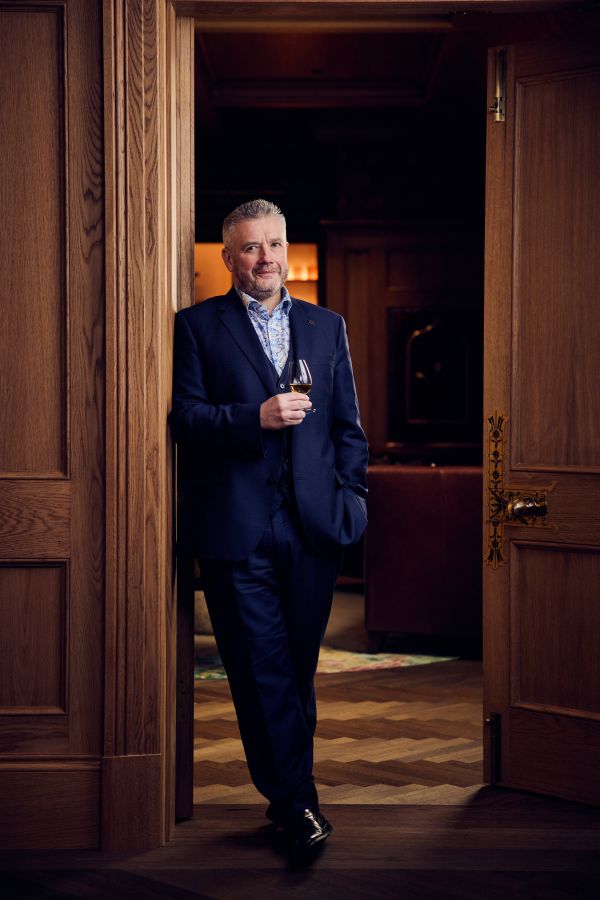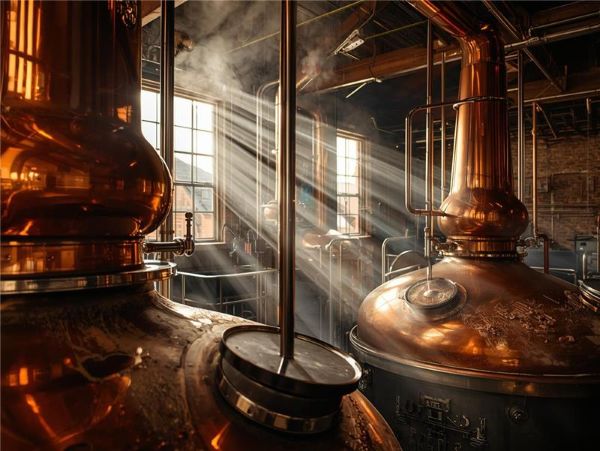White Whisky
There's an age-old colour divide among drinks, with white spirits in the mixable, early evening space, while the likes of whisky are more after-dinner. Chivas is aiming to shake things up, reports Tom Bruce-Gardyne ...
With whisky we are easily fooled by our eyes. A deep mahogany colour so implies sherry that we will start tasting it even if it's not really there. More importantly, colour suggests age and thus quality which is presumably why many a mainstream Scotch brand is bottled with a dash of spirit caramel – the industry's answer to fake tan.
Yet Chivas Bros, Pernod Ricard's Scotch whisky division, has just moved in the opposite direction with its latest innovation – Chivas Regal Crystalgold which was launched last week at the Singapore Grand Prix in a fancy, bespoke bottle with an RRP of £51. Shortly before then, I had a strictly embargoed sneak preview in a London hotel with fellow drinks writers.
The lights dimmed and we were instructed to put blindfolds on as Sandy Hyslop, master blender for Chivas Regal, took us through a tasting and invited comments. The consensus was of a smooth, characterful dram that was clearly whisky, until we whipped off our blindfolds to see a spirit as clear as gin.

Crystalgold is Scotch whisky in all but name. It claims to spend the statutory three years in wood, but being colourless it is officially defined as a 'spirit drink' – or, as the label puts it in somewhat clunky prose: 'Golden oak-aged spirits filtered crystal clear, blended with a touch of freshly distilled spirit.'
It was the culmination of three years of experimentation with filters and flow-rates to achieve "maximum flavour retention" and "showcase our technical prowess," we were told by Sandy. But it begs an obvious question, a question that rose like a mushroom cloud above the table in that London hotel – why?
It seems there are two main reasons, from what Nick Blacknell, Chivas Regal's global marketing director had to say. First, the chance to create a clear liquid that combines the "heritage of whisky with the mixability of white spirits" is something that has "long been a holy grail in the industry," he claims. The second, is that Chivas Regal, the world's third biggest-selling Scotch brand with current annual sales of 4.8 million cases – down from 5.2m in 2022, could do with a boost.
Having come up with the idea four years ago, the various brand teams within Chivas Bros met to discuss who would take it on. "It's surprisingly easy as a big brand to just get forgotten about, even if you've got amazing distribution. The consumer focus is always on the 'new'," Nick told me afterwards. "I think when I stuck my hand up, I was thinking this is so radical, it's good for the image of Chivas to show that it is relevant and innovative. What was also on my mind, is what Sandy was articulating – if you don't retain the integrity, it was a high stakes project. It could have gone wrong."
Indeed, if Crystalgold is perceived as just Chivas vodka, it could seriously damage the mother brand – something that Nick Blacknell knows only too well to judge by his nervous laughter.
.png)
It is an undeniably bold move, and one that has an unhappy precedent. In 2005 Diageo launched what it called "a whisky for today" - J&B-6°C that was named after the way it was chill-filtered. "Research told us that very dark colour is associated with verystrong taste," explained J&B's then global brand manager, Iain Kennedy. "The challenge we gave our blenders was to develop a fresh-tasting Speyside blend that had neither the spirit characteristic of youth nor the wood characteristic of age."
Many saw it as a desperate bid to stem the tide of vodka whose leading brand had once promoted itself in America as 'Smirnoff white whisky: no smell, no taste'. Was this Scotch whisky belatedly repaying the compliment? Kennedy insisted otherwise, but J&B -6° was quietly dropped within a year.
Sandy Hyslop sees no comparison, on quality grounds. By chilling it down to -6°C "you'd scrub it to death," he told me. "All the fatty esters and acids would come out of solution and end up on the filter sheets." Nick Blacknell also believes J&B's attempt "wasn't true to itself" and was born out of panic "at a time when vodka was king."
That is no longer true, but the fact remains whisky brands, or at least those who market them, feel boxed in by their dark spirit classification. Colourless rums and tequilas happily play in the same mixable space as vodka and gin, while Scotch is forced to spectate. "I think consumers believe lighter, fresher drinks demand white spirits," said Nick. "And, even though it's really nice to have a citrus-driven Scotch drink like a whisky sour, their natural prejudice is not to put dark spirits in lighter drinks."
With Chivas Regal Crystalgold they now have that option, which is becoming more important as drinking occasions shift to earlier in the evening. Its owners are not anticipating an overnight success, and know it will take an awful lot of trial. As Nick says: "Marketeers always talk about 'liquid on lips', but I think in this case it's crucial." Whatever happens, he and his team deserve credit for at least trying. For once that over-used word 'innovation' really does apply.

Award-winning drinks columnist and author Tom Bruce-Gardyne began his career in the wine trade, managing exports for a major Sicilian producer. Now freelance for 20 years, Tom has been a weekly columnist for The Herald and his books include The Scotch Whisky Book and most recently Scotch Whisky Treasures.
You can read more comment and analysis on the Scotch whisky industry by clicking on Whisky News.
